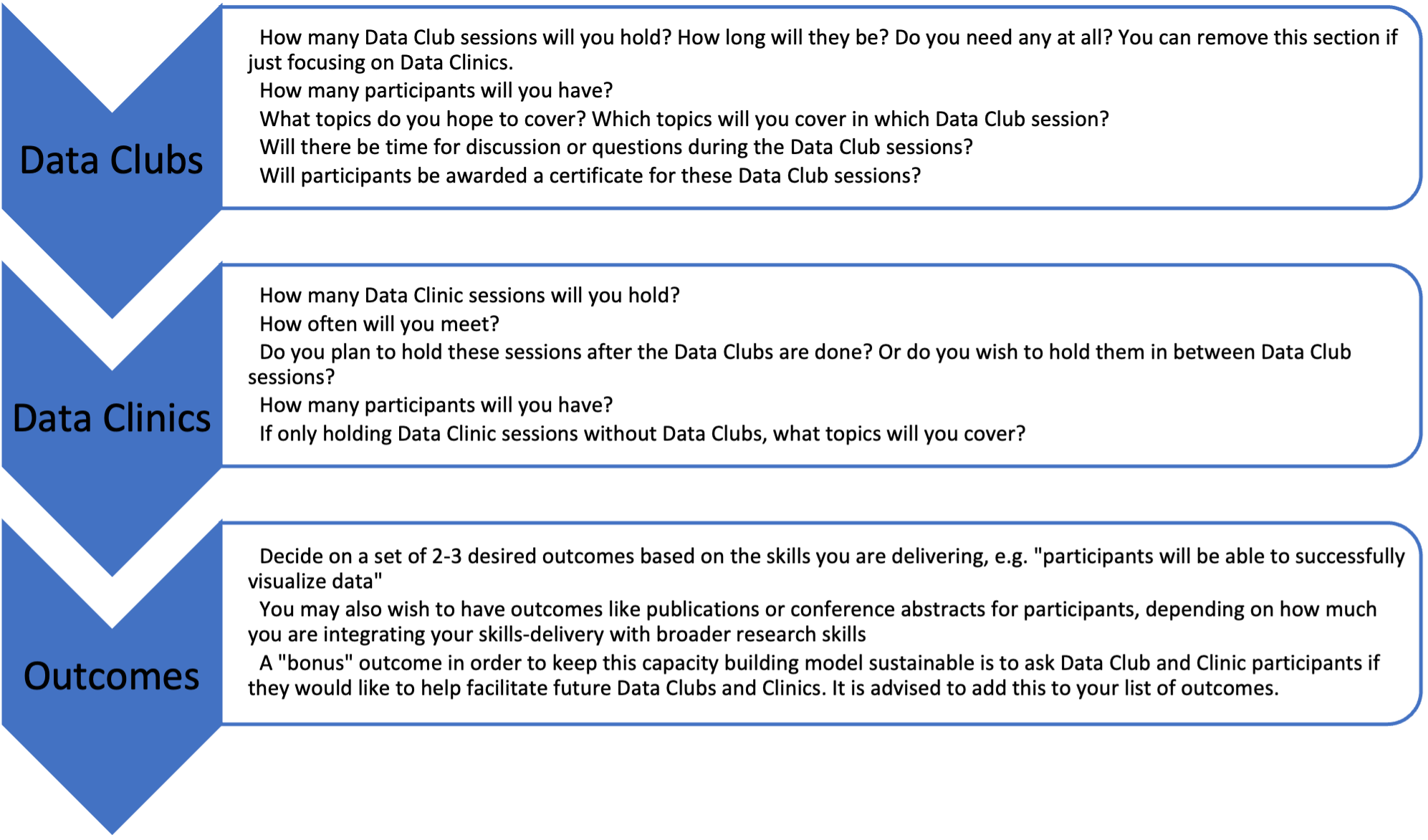
IDENTIFYING THE NEED
The team setting up the Data Clubs and Clinics, through various existing research capacity building activities in the region, may already have an understanding of the local landscape of existing data science education and practice gaps, as well as interest among students and professionals that make up their target audience. However, it is advised that the team also assessed the resources available, including expertise, technology, and space, which would suit the specific needs of the community. Pilot sessions can be held to gauge a better idea of local priorities and act as a way to determine immediate target topics/series of topics to pursue. While teams can pursue a full scoping or gap analysis, it is not necessary, as that requires a lot of time and resources. A practical pilot session or survey to the target audience may offer more efficient ways of identifying need.
DEVELOPING A PLAN AND SETTING LEARNING OBJECTIVES
Prior to running the sessions, an outline for delivery should be created (Figure 1).
-
At this point, the mode of delivery should be decided – will the Data Club and Clinic sessions be delivered in-person or online? Or will they be hybrid?
-
How long will the sessions be? We commend half-day sessions (3-4 hours) for Data Clubs and 1-2 hour sessions for Data Clinics.
-
How long will the follow-up period be? We recommend somewhere between 2-6 months for follow up.
Figure 1. Data Club and Clinic delivery plan

Based on the outcomes you’ve noted, decide on a list of learning objectives. These objectives may be as simple and broad as having a basic understanding of the skills you are delivering, or they may be specific, in terms of being able to perform certain tasks as a result of learning those skills. An important learning objective to add is “following the Data Club and/or Data Clinics, participants will work on integrating this skill into their routine work”. You may wish to have learning objectives that are specific to your timelines, e.g. “by the end of Month 1, we expect these learning objectives to be reached”, and “by the end of Month 6, we expect these learning objectives to be reached”.
|
|

